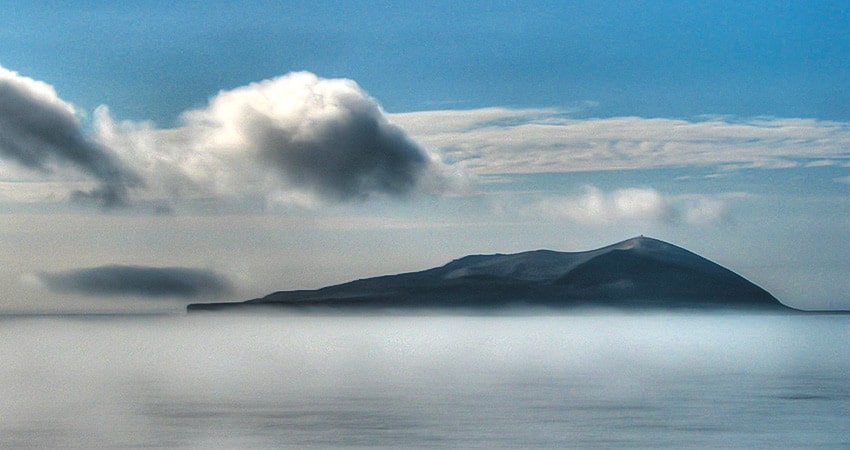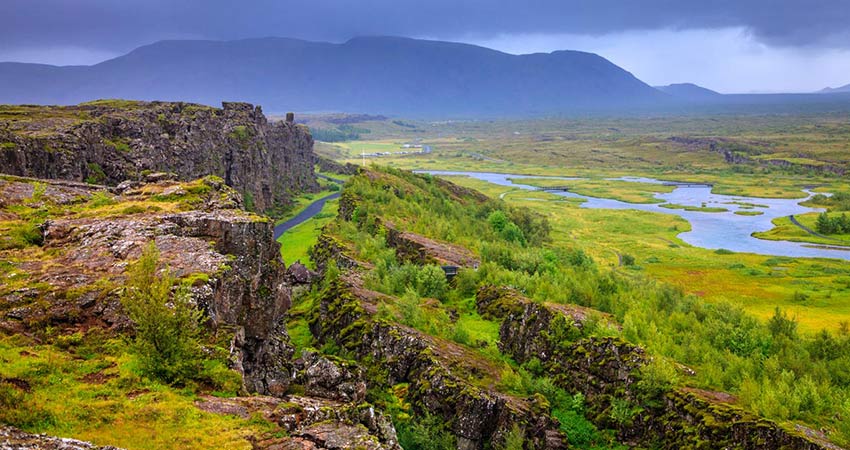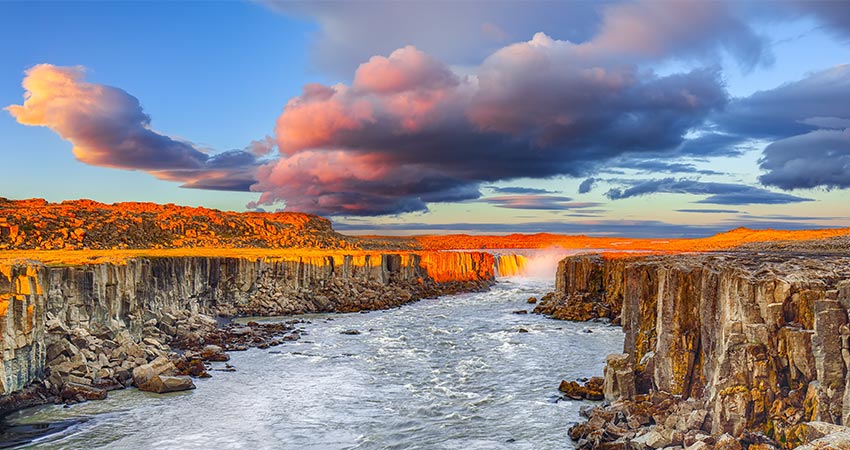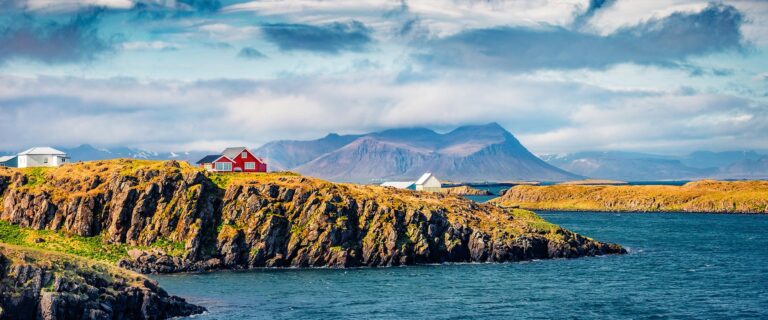Iceland’s story includes a unique system of government, literature, and a landscape that is an out-of-this-world fantasy. As a matter of fact, when you visit Iceland, it may look eerily familiar. This country is a film favorite for location scouts, not only in the USA, but for filmmakers from Britain, India, Russia, and the Philippines. Some of the biggest movies shot here include Batman Begins, Interstellar, Rogue One: A Star Wars Story, Captain America: Civil War, and Justice League as well as the James Bond movies A View to a Kill and Die Another Day.
In Iceland, just outside Reykjavik, you can get a first-hand glimpse of how the Earth was born and how it shifts throughout time. The National Parks are simply stunning. Reykjavik was the fifth city in the world chosen as a UNESCO city of literature, due to the nature of its medieval manuscripts. The Icelandic sagas are storytelling at its finest, with tales of Iceland’s settlers. And, many of our favorite works of fantasy are based upon Norse mythology, the Elder Edda.
Þingvellir National Park
This National Park, pronounced Thingvellir, is where an open-air parliament was established in 930 AD and continued through 1798. For two weeks each year this assembly set rules, laws, and settled arguments. Called ‘The Althing’, fifty structures of stone and turf still stand in the Park. Tenth century ruins are likely buried, there is a church, and the remains of farms from the 18th and 19th centuries exist. All in all, this beautiful site shows how the land was cared for over a period of 1,000 years. Come to this site, and you’ll get a first-hand feel for a pioneer community during the age of the Vikings. It is very close to the Icelandic people’s hearts.
Not far west of Reykjavik, this National Park is an active volcanic area of 93 square miles of which 36 is designated as the UNESCO World Heritage Site. A major rift runs through the park, creating cliffs. It almost looks as if two of the world’s major tectonic plates were torn by a giant’s hand. On three sides of the Park, you’ll see layers of mountains, lava fields that grow grass, and Lake Þingvallavatn. It meets several of UNESCO’s outstanding standards!
Surtsey Island

This island off Iceland’s south coast, formed 430 feet below sea level, reached the surface during eruptions from 1963 to 1967. Protected from human habitation or interference, it is a modern nature laboratory, raw and new. Named after Surtr, a giant from Norse mythology, it is studied by botanists and biologists to understand just how life gradually begins on a fresh, barren island.
Study began in 1964. Scientists have carefully noted seeds that were carried there by ocean currents and the arrival of molds, bacteria, and fungi. In 1965, shortly after the creation of the island, the first vascular plant arrived—by the end of the 1960’s there were ten species. In 2004, there were 60 vascular plants, 71 lichens, 24 fungi, 89 species of birds, and 335 types of invertebrates. How long this island will exist is up for grabs, but Surtsey is proof that, to put it simply, life is in love with life.
Vatnajökull National Park – Dynamic Nature of Fire and Ice
Covering more than 25% of the central highlands, this is Iceland’s must-visit, and the region for which Iceland was first called “land of fire and ice.” It includes the largest glacier in Europe (outside the Arctic), tumbling glacial rivers, plains, black sands, canyons etched by time and the force of rivers, and some of the most vivid waterfalls in the world. Ten of the eight volcanoes here are below glaciers. Amazingly, plants that thrive in groundwater have been here since the Ice Age.
Comprising 12% of Iceland’s total area, there are plenty of hiking trails which range from easy to difficult. There are visitor centers, as well as shops and exhibits. Each trail is a peek into the geologic history of the earth. Consider hiking up Svartifoss waterfall for otherworldly basalt columns that seem to flow down the mountain. You can also kayak around icebergs in a glacial lagoon. The entire area is so unusual that scientists have used it to test equipment and spacesuits bound for Mars.
To become a UNESCO World Heritage Site, an area must have outstanding natural or cultural value. Iceland has both. When you visit, see the places where medieval Vikings established rule, and then soak up the scenic landscapes where nature has run wild!
Let your Destination Expert know that you want to know about Iceland’s early people as well as experience some of the most astonishing natural features on Planet Earth!











